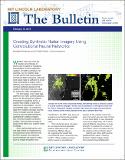| dc.date.accessioned | 2020-10-19T15:50:41Z | |
| dc.date.available | 2020-10-19T15:50:41Z | |
| dc.date.issued | 2019-02-15 | |
| dc.identifier.uri | https://hdl.handle.net/1721.1/128108 | |
| dc.description.abstract | Weather radar can track the location and intensity of storms and is useful for managing transportation around hazardous weather. Air traffic controllers, for example, rely on weather radar to track storms that could impact aircraft and flight schedules. Although land-based radar is sufficient to cover most continental air space, many offshore and oceanic controllers do not have sufficient access to the weather information that they need for proper air traffic management. Researchers at MIT Lincoln Laboratory developed the Offshore Precipitation Capability (OPC), a system that creates a radar-like depiction of precipitation — known as synthetic radar — by combining data from multiple nonradar sources, and implementing convolutional neural networks into the OPC system as a means of combining the nonradar data sources to create synthetic radar. | en_US |
| dc.language.iso | en_US | en_US |
| dc.publisher | MIT Lincoln Laboratory | en_US |
| dc.relation.ispartofseries | The Bulletin; | |
| dc.rights | Attribution-NoDerivs 3.0 United States | * |
| dc.rights.uri | http://creativecommons.org/licenses/by-nd/3.0/us/ | * |
| dc.subject | Lincoln Laboratory | en_US |
| dc.subject | Supercomputing | en_US |
| dc.subject | LLSC | en_US |
| dc.subject | Artificial Intelligence | en_US |
| dc.title | Creating Synthetic Radar Imagery Using Convolutional Neural Networks | en_US |
| dc.type | Article | en_US |
